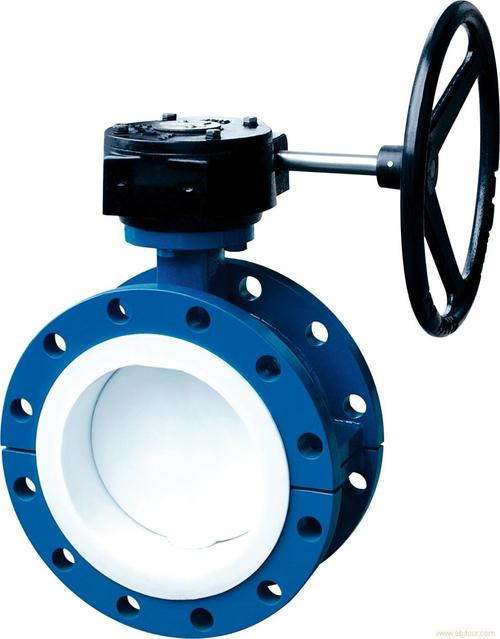difference between gate valve and globe valve
gate vs ball valve

picture of a gate valve
What is Concentric butterfly valve?
The concentric butterfly valve is a flow control mechanism that uses a rotary disk to control the flow medium in the system. The disk remains in the passage, but since it is so thin, it gives very little resistance to the flow.
Butterfly valves have many benefits over other types of valves, such as economic construction, which consists of fewer components, making it easier to operate and maintain. The wafer design body and the relatively lightweight reduce its costs and installation costs, equipment, pipe support, labor and set – up time.
The most common type of butterfly valve arrangement is a centric or a concentric butterfly valve. This type of butterfly valve consists of the stem which travels along the middle line of the disk in the center of the pipe bore and the seat is inside diameter of the body of the valve. This no offset valve configuration is also known as a resilient-seated valve as it depends on the flexibility of the seat rubber when the flow is closed, for the reliability of the seal. In this type of valve, the disk first interacts with the seat at about 85° for a 90° rotation. Concentric butterfly valves are widely used in low-pressure applications.
Classification by connection type
Based on the connection there are different types of concentric butterfly valves.
- Wafer type ends.
- Lug type ends.
- Both flanged ends.
- Butt-welded types end.
Wafer Type: The wafer type of the butterfly valves was built to keep a tight sealing, protecting against bi-directional pressure differentials, to prevent any backflow in devices that were built for uni-directional flow. This is done by the use of a tightly fitted cap, such as an O-ring, gasket, precisely machined, along with a smooth valve face on the downstream and upstream parts of the valve.

WAFER TYPE CONCENTRIC BUTTERFLY VALVE
Lug Type: The lug body type of the butterfly valve design is identical to the 3-piece ball valve in which one end of the pipeline can be replaced without impacting the other side of the valve. This can be achieved with threaded inserts, flanges, and two sets of lugs (bolts) that do not use nuts so each flange has its bolts. It is also important to remember that you do not need to shut down the whole device to inspect, clean, repair, or replace the lug butterfly valve.

LUG TYPE CONCENTRIC BUTTERFLY VALVE
Flanged End Type: The flanged end type butterfly valve has a flange at both ends of the valve to be attached with pipe flanges. This type of end connection is used for the very large size of the butterfly valve.

FLANGE TYPE CONCENTRIC BUTTERFLY VALVE
Welded End Type: The welded end type butterfly valve is used where the system is under very high pressure. These types are generally used for small size butterfly valves.

WELD TYPE CONCENTRIC BUTTERFLY VALVE
How Does Concentric Butterfly Valve Work?
Concentric butterfly valves have a relatively simpler design. The body, seal, disc, and stem are the main parts of the concentric butterfly valve. The traditional butterfly valve has a disk located in the middle of the attached pipe and a stem is connected to the actuator or handle on the outside of the valve. When the valve is in a closed position, the disk is perpendicular to the flow and the seat of the valve is shut. The stem is sealed with an O-ring. When the valve makes a turn of 90 degree with the help of actuator or handle, the disk travels away from the valve seat and is located parallel to the flow. The rotation at an angle less than 90-degrees allows the flow to be either throttled or proportional.
When to Use Concentric Butterfly Valve?
Concentric butterfly valves employ soft sealing material due to which it can only be used in basic (water & wastewater treatment plant), special liquid (chemicals, abrasive liquids, etc), and gases for up to 200 psi and 400degree F.
- Water treatment.
- Water Distribution.
- Water Transmission.
- Aeration System.
- Fire Protection, etc.
Concentric butterfly Valve vs Eccentric Butterfly Valve
- The concentric butterfly valve disc is simple, but eccentric butterfly valve disc consists of disc seal, seal holding ring, and holding bolt.
- The sealing construction of the concentric valve is very simple, the disc touches the rubber seat directly, while in eccentric butterfly valve a laminated disc seal touches with the metal body seat.
- The concentric butterfly valve has a soft seal while eccentric butterfly valve seat is made up of metal, it could be a fitted body seat or a welded seat that can be replaced.
- A concentric butterfly valve has a pressure restriction and can reach a pressure only up to 150LB/PN25, while offset/eccentric butterfly valve could handle up to 600LB/PN100 of pressure.
- Due to the different construction of the seal structure, the concentric rubber seat can’t handle a high temp, but an offset/eccentric butterfly valve could work as they are having a metal/hard seal design.
- The advantages and disadvantages are apparently, and very easy to choose which one to use for a real condition. When the system has high pressure or having a high temperature, an eccentric valve is used.
NTGD Valve is a professional concentric butterfly valve manufacturer, feel free to contact us if you have any question.